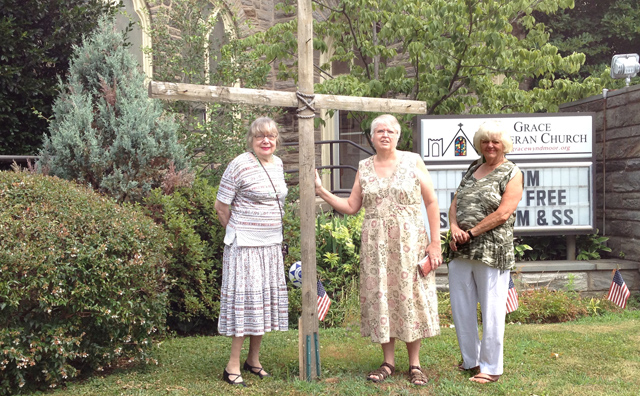 The Redeemer Ambassadors have been busy since Easter in East Falls, but we returned to the road this morning. Several Ambassadors requested a visit to a church they often pass—Grace, Wyndmoor, just a few blocks from the city line.
The Redeemer Ambassadors have been busy since Easter in East Falls, but we returned to the road this morning. Several Ambassadors requested a visit to a church they often pass—Grace, Wyndmoor, just a few blocks from the city line.
Grace has a great deal in common with Redeemer. Its cornerstone has 1908 on it. Redeemer’s is 1909. We learned from talking to members that the building had burned in the 1920s. Redeemer, too, suffered a devastating fire at about the same time. We both rebuilt.
One of our Ambassadors was actually very familiar with Grace, having attended the church between 1991 and 1997 and actively supporting the church as a Sunday School and Vacation Bible School teacher. There were more new faces than old after 15 years. Same at Redeemer! Why are other congregations allowed to change, but Redeemer is locked in people’s minds as the same in 1960, 1998, 2005 and 2012?
On this muggy Sunday morning, there were about 35 in attendance. The sanctuary is small and that number filled it nicely.
We were late, regretfully. We read a page on their web site that describes their education program that had a different service time than the one that was on the home page. We shouldn’t have read so far!
But we were greeted warmly and a few remembered the two Redeemer members who were active in their community for six years.
We were aware that Grace’s pastor, the Rev. Carol Ficken, has been an active member of SEPA Synod Council that has been so relentless in trying to destroy Redeemer’s faith community. This made passing the peace during worship a bit awkward. Peace takes more than a handshake.
All the Ambassadors were impressed with the organist who we believe is listed in the bulletin as the Minister of Music, Sheridan Seyfried. His understated presence at the organ may account for the congregation’s strong voice.
We visited their fellowship space, which is nicely appointed. The classrooms surrounding an open hall are decorated to resemble a small village. Having been in the midst of a renovation when SEPA locked our doors, we were able to share with a member what we had done with our ancient kitchen range and oven and discuss the challenges of making basement meeting areas pleasant.
We usually write a letter to the congregations we visit, putting the letter in the offering plate. We are going to start posting our letters here, where we can be sure all members have access.



